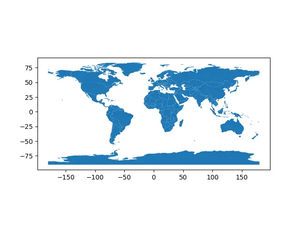Handling datetime information efficiently is crucial when processing time series data or any dataset with time-related attributes. In Python, the Pandas library simplifies data manipulation tasks, including the conversion of timestamp columns to datetime objects. This tutorial will guide you through four examples, from basic conversions to more complex manipulations involving datetime columns in a DataFrame.
Introduction to DateTime in Pandas
Before diving into the examples, let’s establish a basic understanding of datetime types in Pandas. The primary type for datetime in Pandas is the DatetimeIndex, which provides a variety of functionalities to work with time series data. Supporting a range of date and time formats, Pandas allows easy parsing and converting operations from strings and UNIX timestamps to datetime objects.
Example 1: Basic Conversion from Timestamp to DateTime
import pandas as pd
# Sample DataFrame with timestamp column
df = pd.DataFrame({
'timestamp_column': [1609459200, 1609545600, 1609632000, 1609718400] #Unix Timestamp
})
# Convert timestamp to datetime
df['datetime_column'] = pd.to_datetime(df['timestamp_column'], unit='s')
# Display the DataFrame
print(df)
Output:
timestamp_column datetime_column
0 1609459200 2021-01-01 00:00:00
1 1609545600 2021-01-02 00:00:00
2 1609632000 2021-01-03 00:00:00
3 1609718400 2021-01-04 00:00:00
This basic example demonstrates how to seamlessly convert a column of UNIX timestamps into a more readable and manageable datetime column.
Example 2: Parsing String Dates to DateTime
import pandas as pd
# Sample DataFrame with string date columns
df = pd.DataFrame({
'date_string': ['2021-01-01', '2021-02-01', '2021-03-01', '2021-04-01']
})
# Convert string date to datetime
df['date_parsed'] = pd.to_datetime(df['date_string'])
# Display the DataFrame
print(df)
Output:
date_string date_parsed
0 2021-01-01 2021-01-01
1 2021-02-01 2021-02-01
2 2021-03-01 2021-03-01
3 2021-04-01 2021-04-01
In the second example, we explored how Pandas handles strings representing dates. Utilizing pd.to_datetime(), the conversion process treats strings intelligently, detecting their format and transforming them into datetime objects.
Example 3: Handling Different Date Formats
import pandas as pd
# Managing different date formats in a DataFrame
df = pd.DataFrame({
'mixed_date': ['01/02/2021', '2021-02-03', 'March 4, 2021', '4/5/2021']
})
# Convert mixed date formats to datetime
df['date_converted'] = pd.to_datetime(df['mixed_date'])
# Display the DataFrame
print(df)
Output:
mixed_date date_converted
0 01/02/2021 2021-02-01
1 2021-02-03 2021-02-03
2 March 4, 2021 2021-03-04
3 4/5/2021 2021-04-05
This example showcases the robustness of the pd.to_datetime() function when faced with various date formats. It accurately identifies and converts them to a standardized datetime format.
Example 4: Error Handling During Conversion
import pandas as pd
# Managing potential errors in timestamp conversion
df = pd.DataFrame({
'date_with_errors': ['2021-01-01', '2021-02-30', '2021-03-01', 'not_a_date']
})
# Converting with error handling
try:
df['date_corrected'] = pd.to_datetime(df['date_with_errors'], errors='coerce')
# This will replace errors with NaT(Not a Time)
except Exception as e:
print(f"Error: {e}")
# Display the DataFrame
print(df)
Output:
date_with_errors date_corrected
0 2021-01-01 2021-01-01
1 2021-02-30 NaT
2 2021-03-01 2021-03-01
3 not_a_date NaT
The final example illustrates the importance of error handling during datetime conversion processes. By specifying errors='coerce', Pandas replaces conversion errors with NaT, thus preventing the process from failing and highlighting rows that require attention.
Conclusion
Throughout this tutorial, we’ve explored various methods for converting timestamps and strings to datetime objects in a Pandas DataFrame. Understanding these techniques enables more effective data manipulation, analysis, and cleaning. Mastering datetime conversions is essential for any data scientist or analyst working with time-series or date-stamped data.
